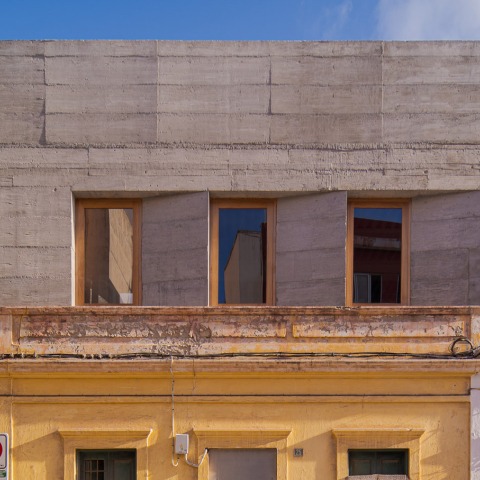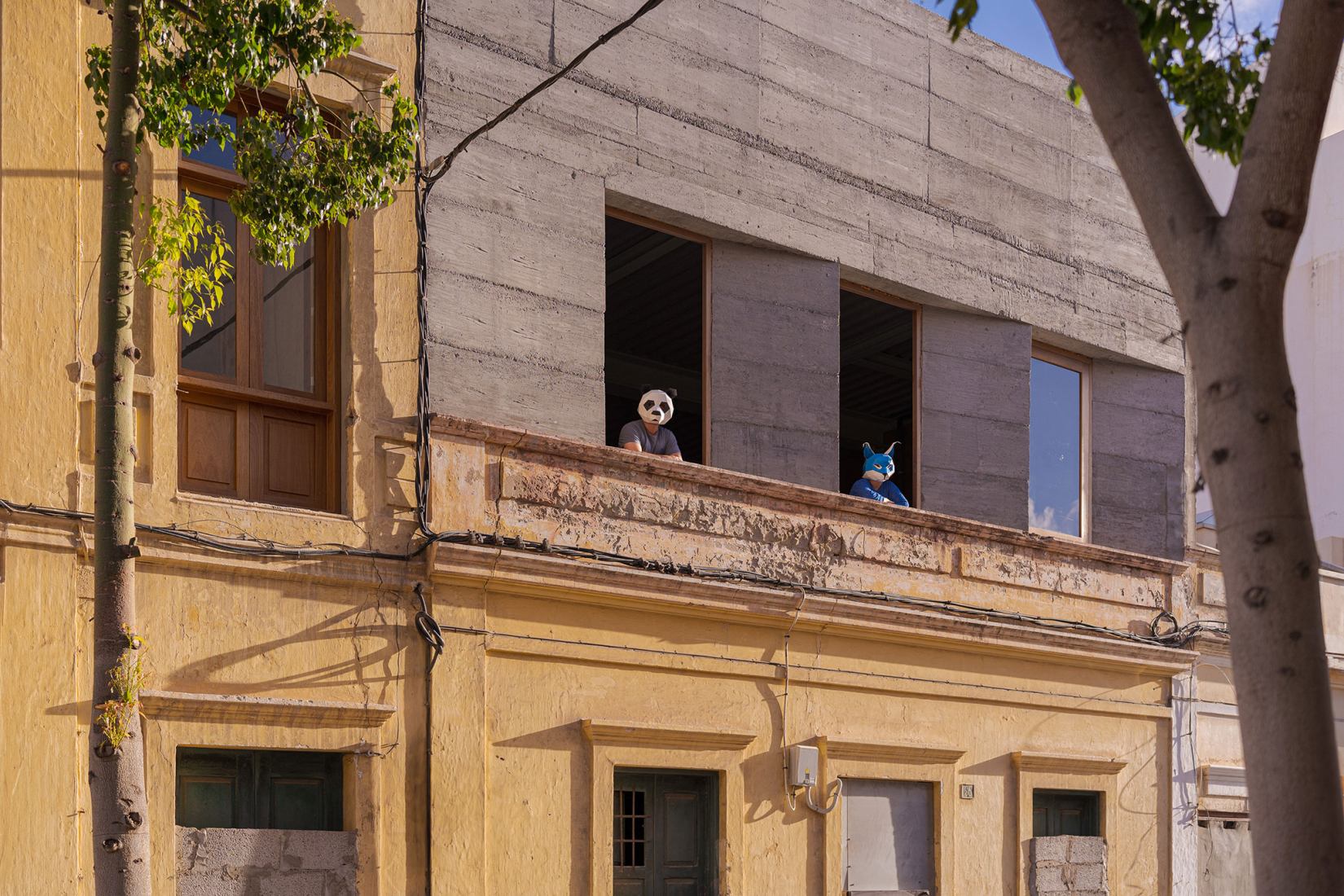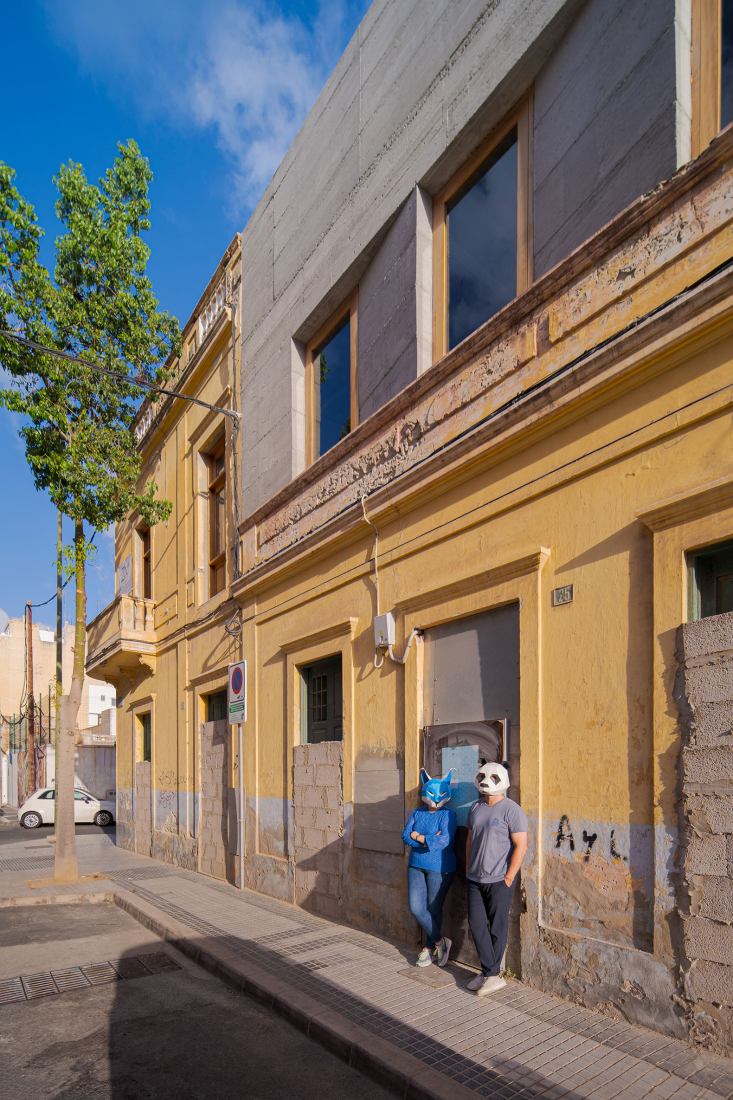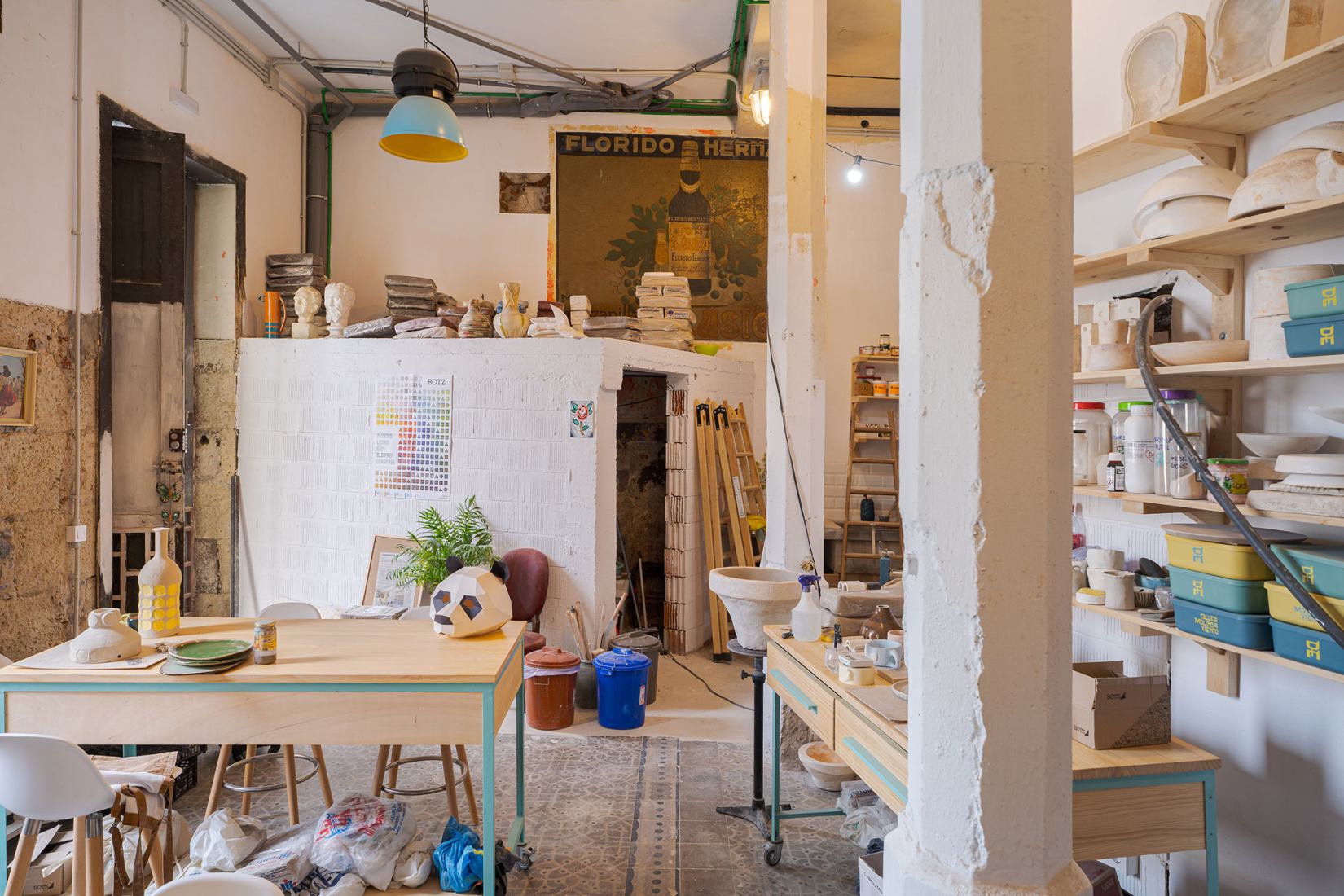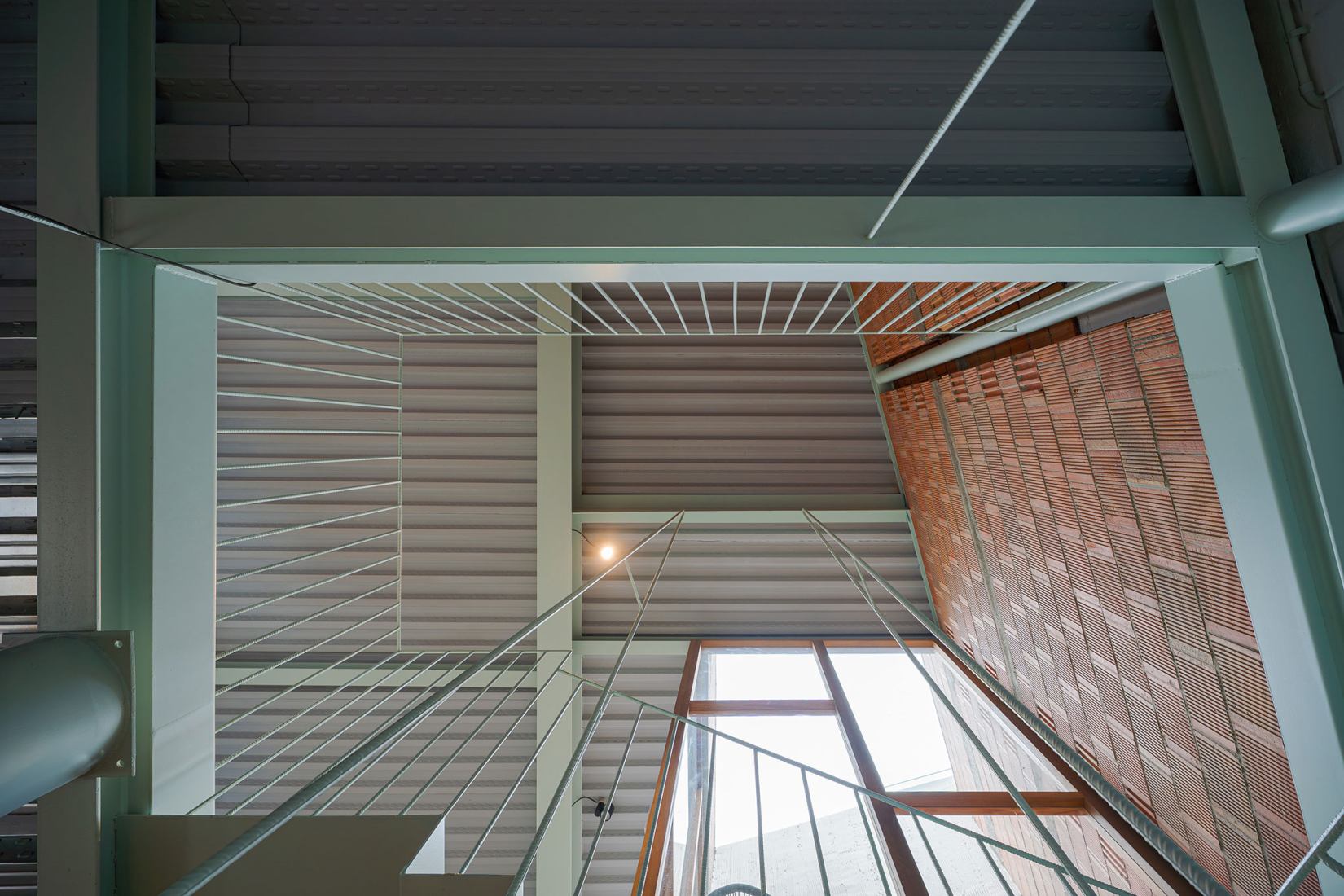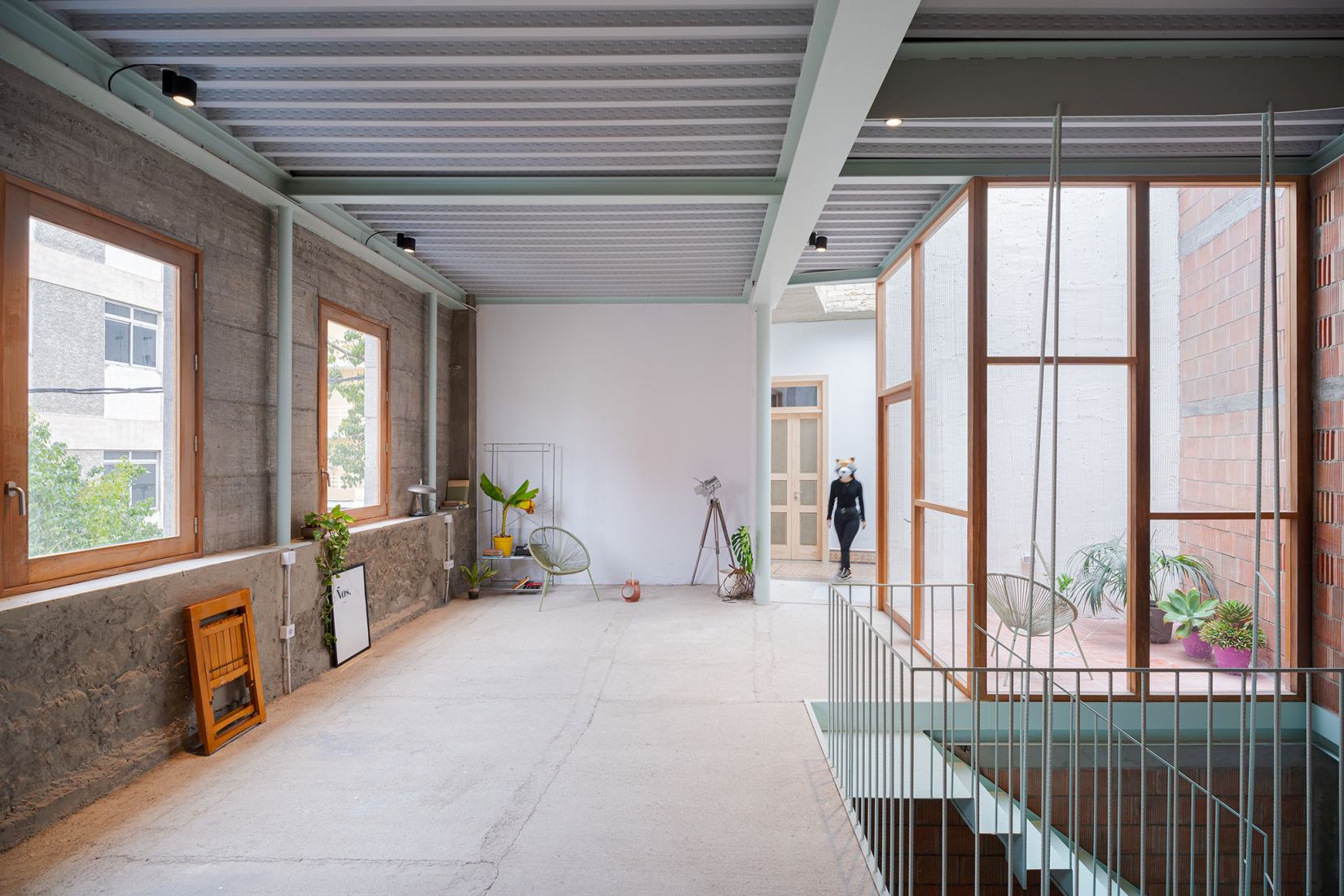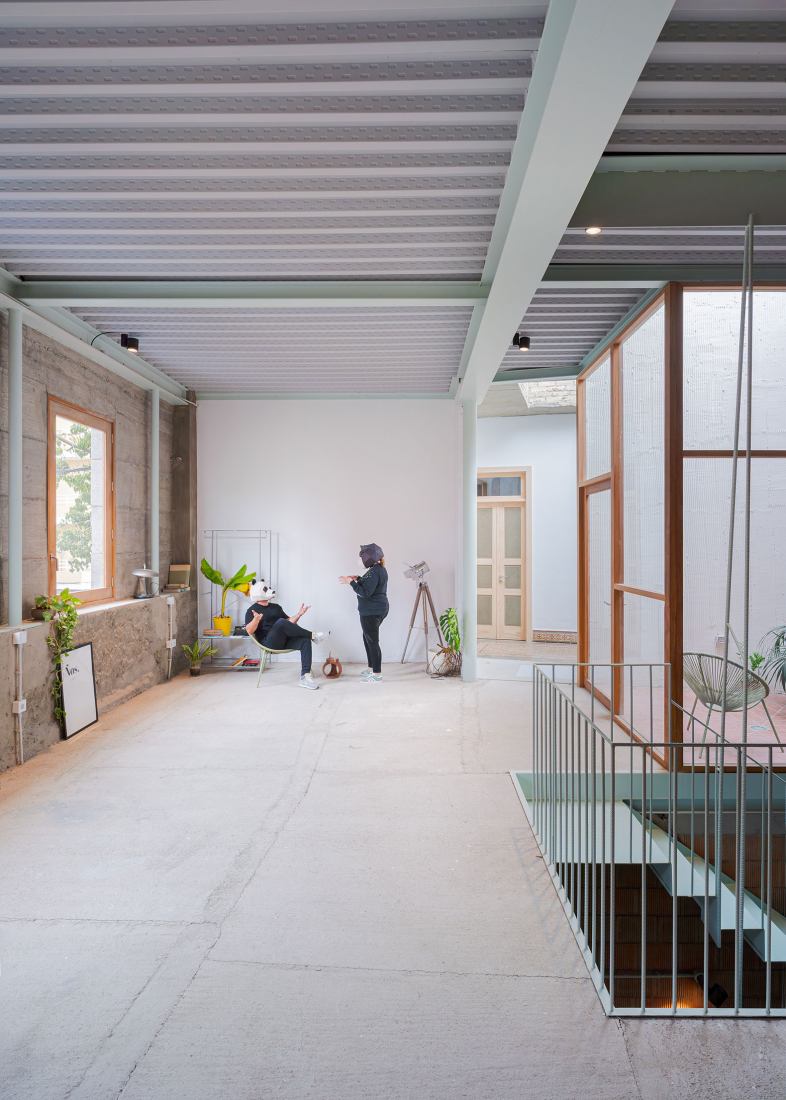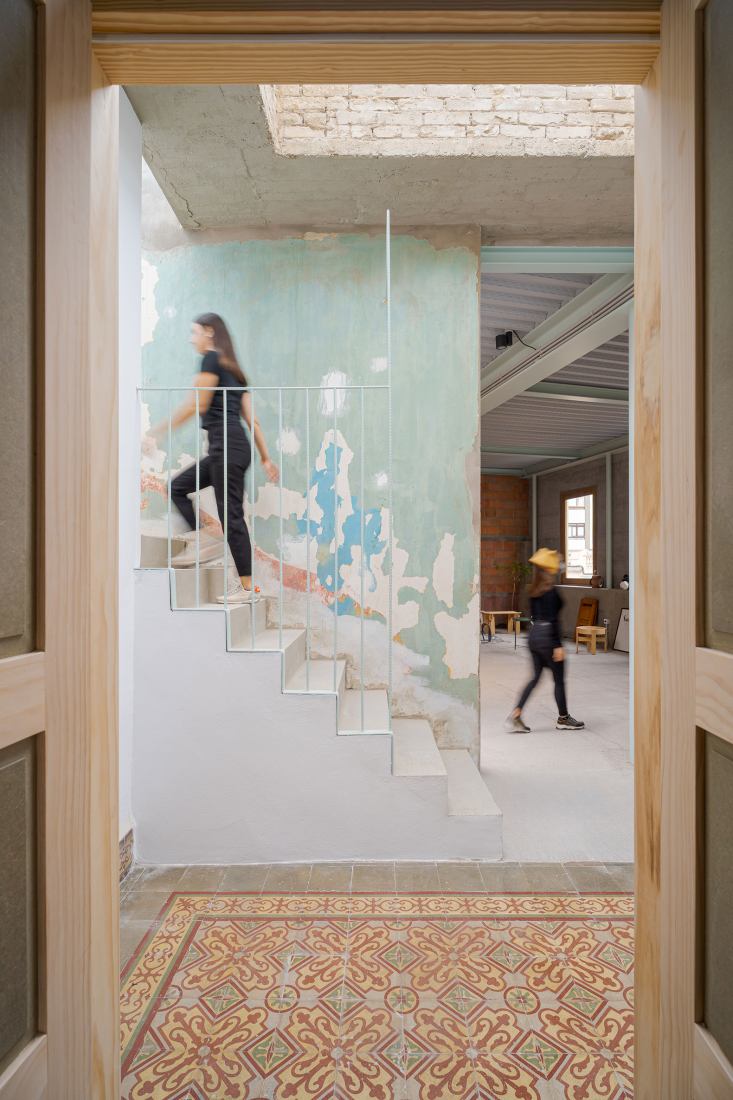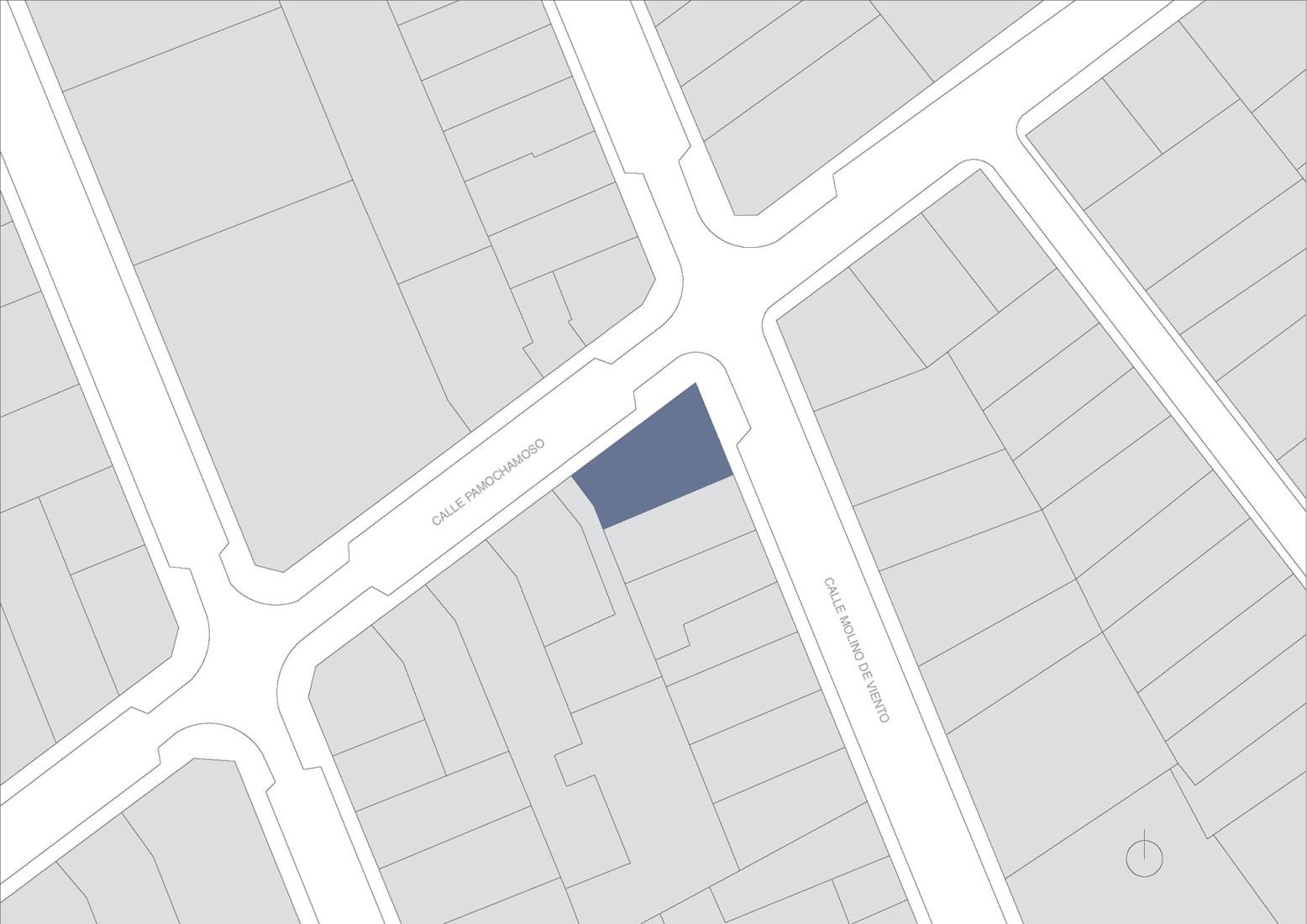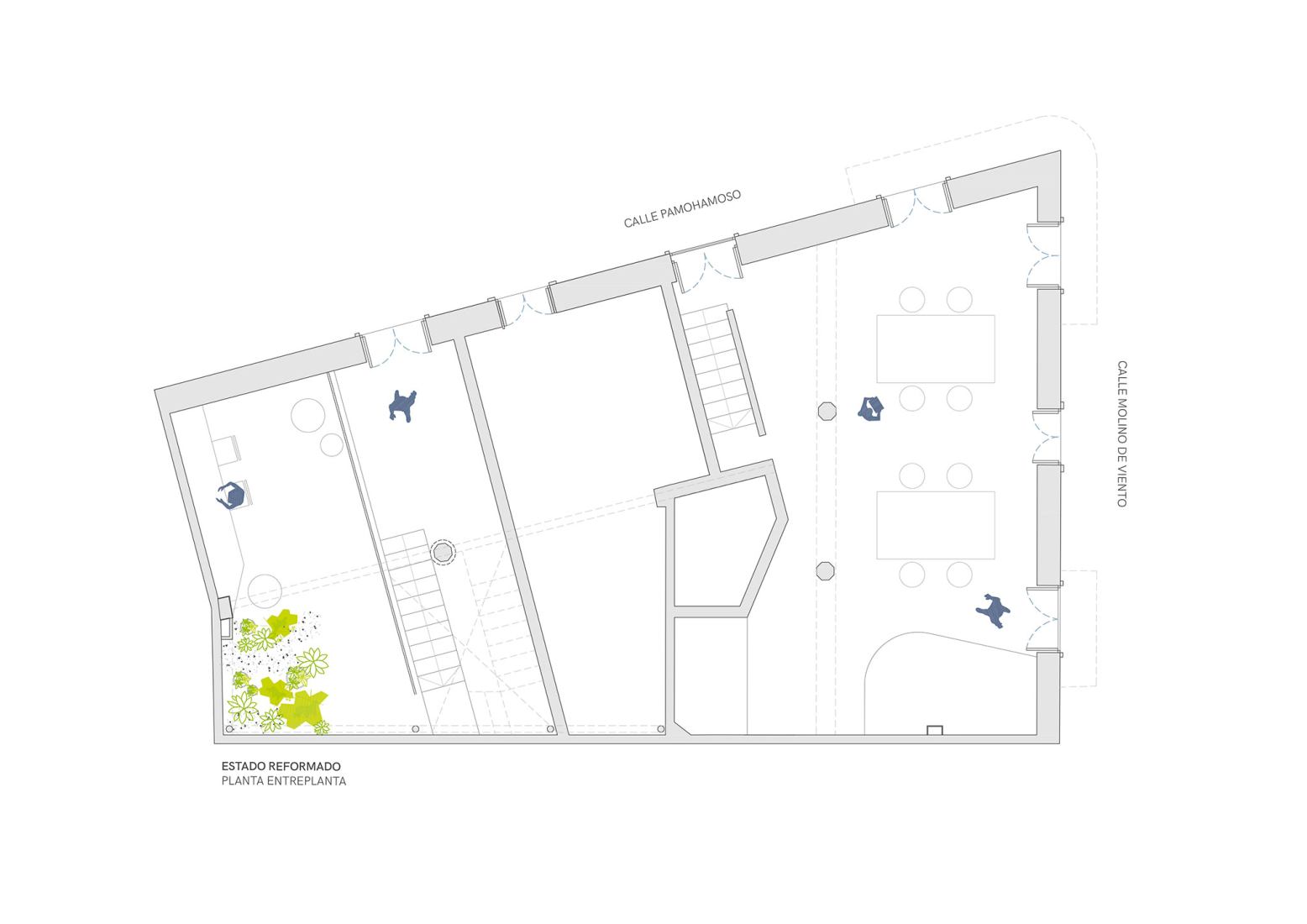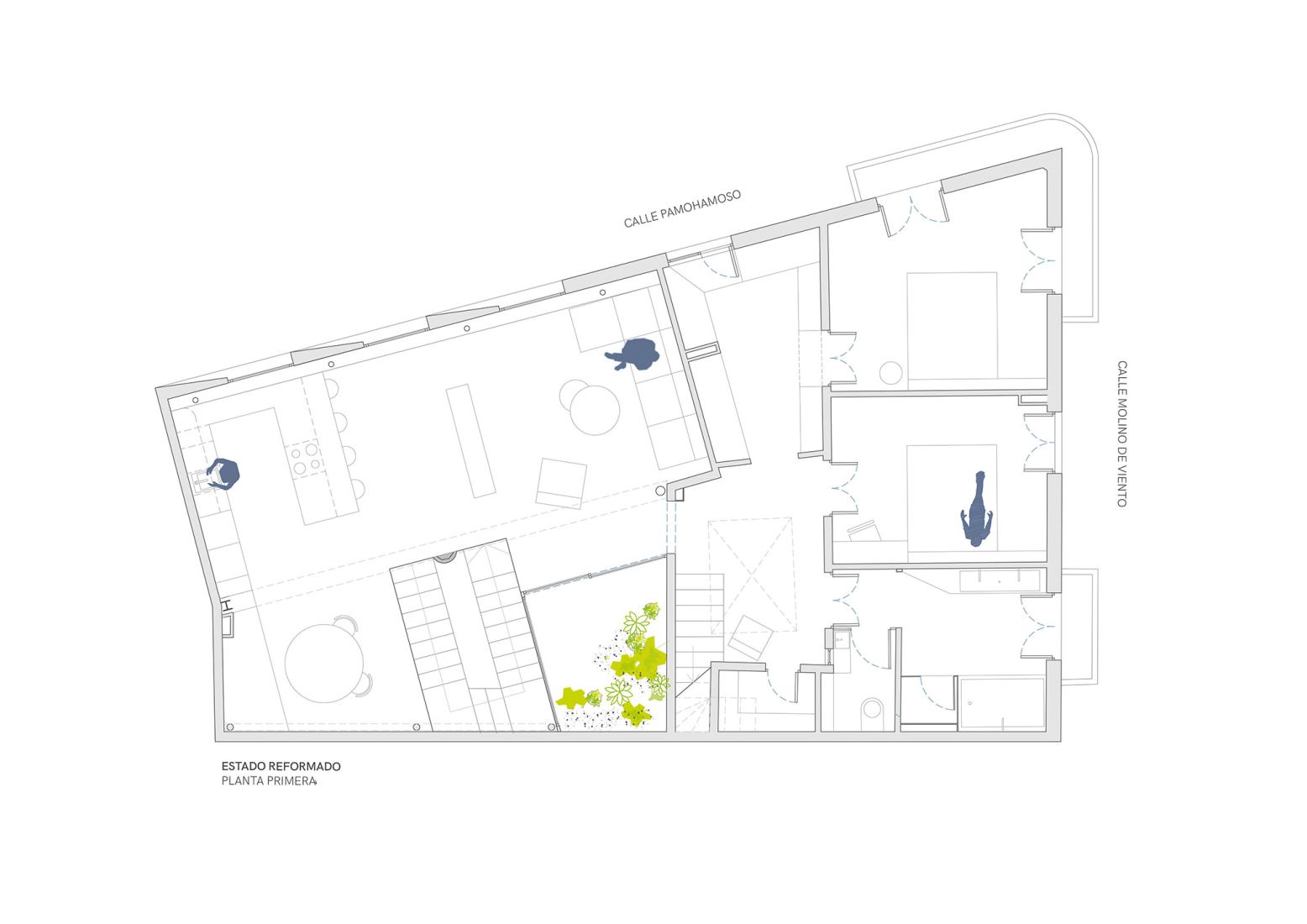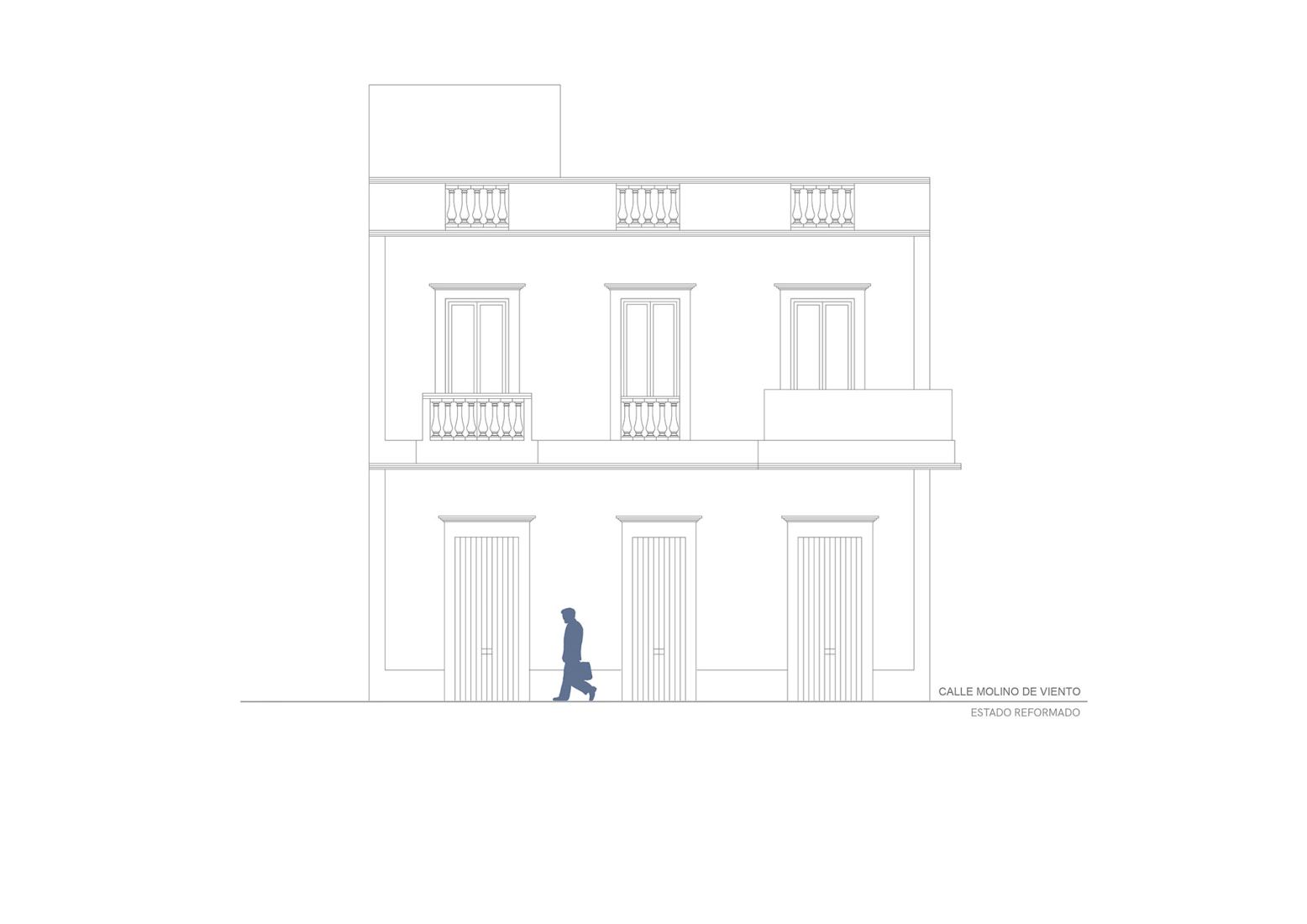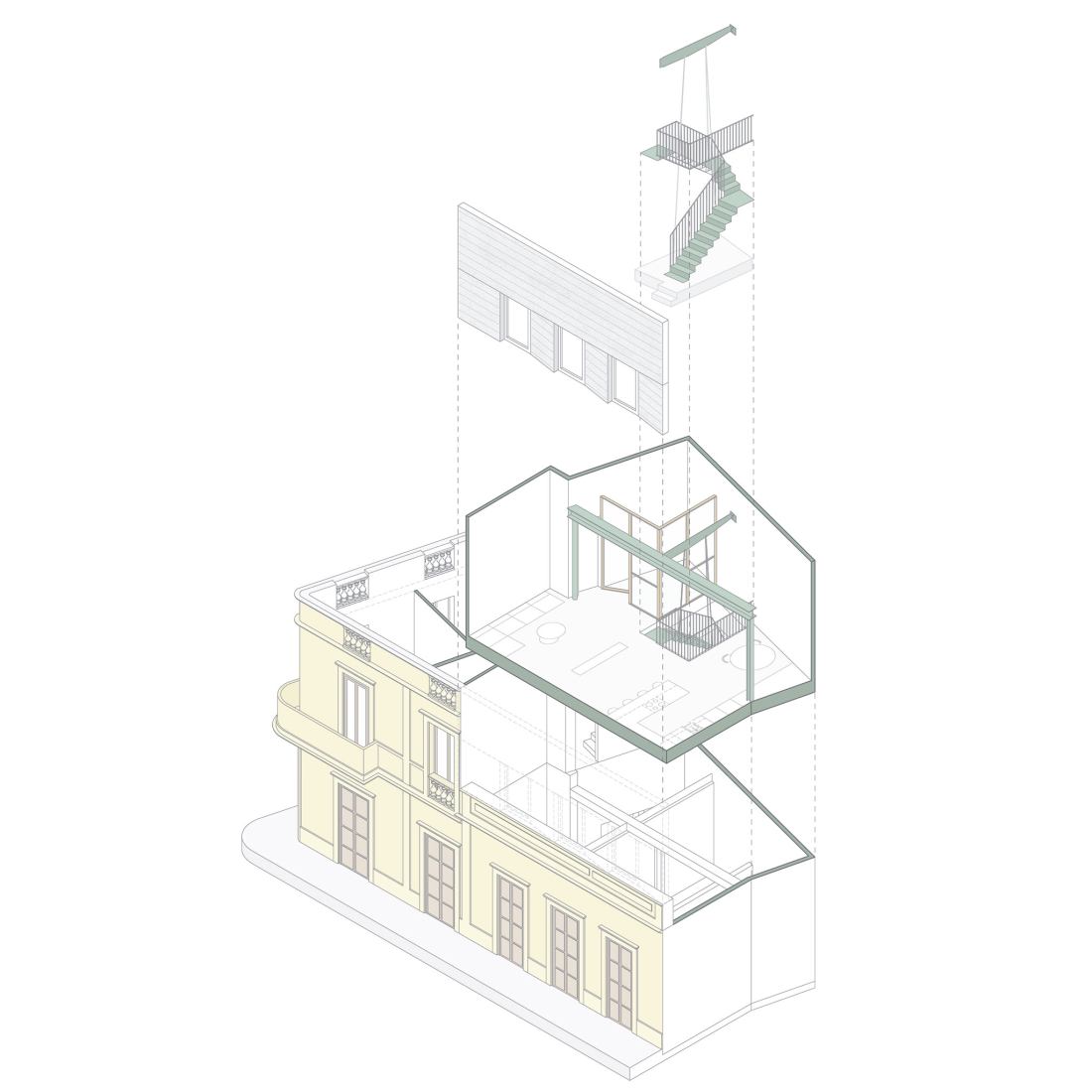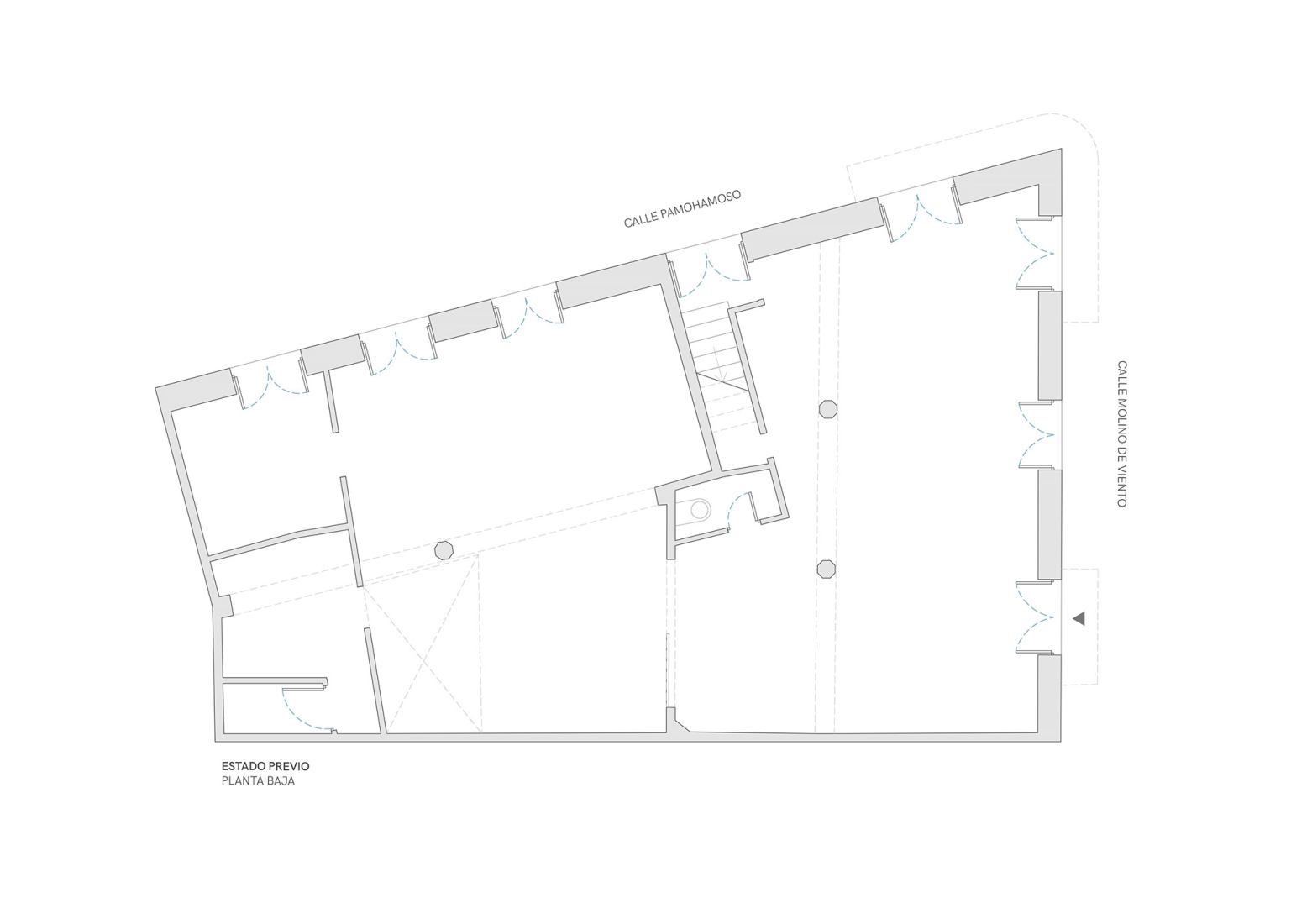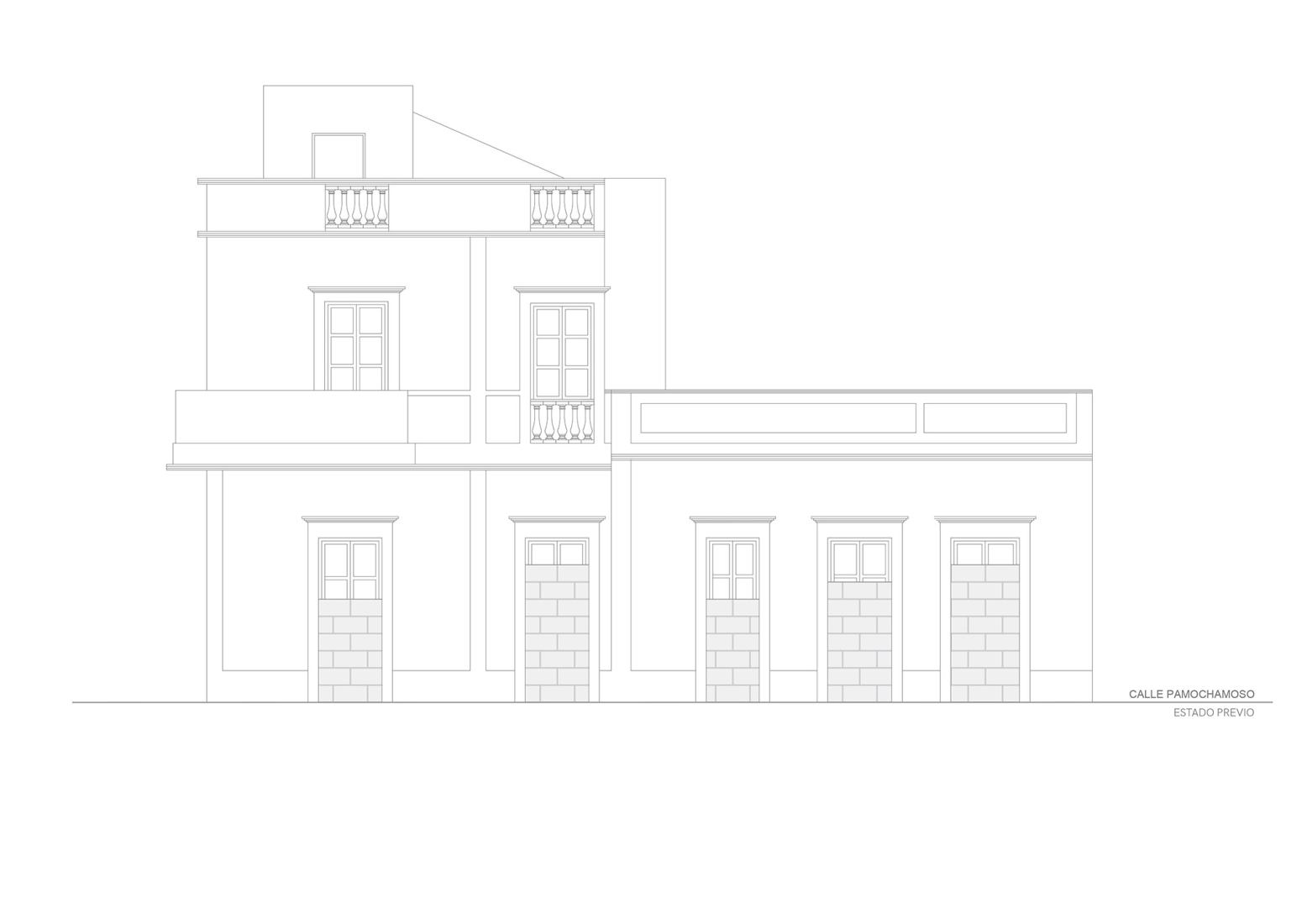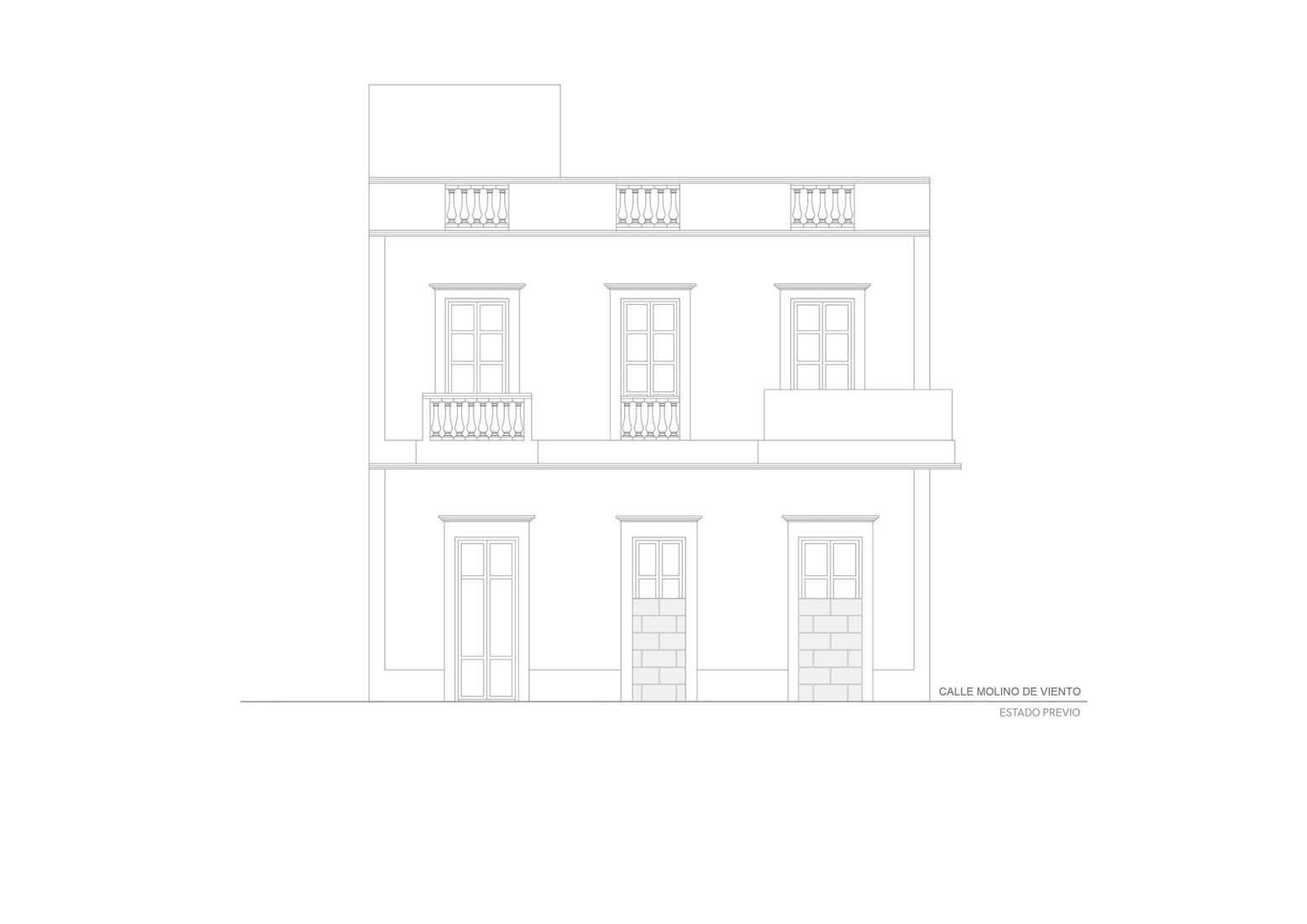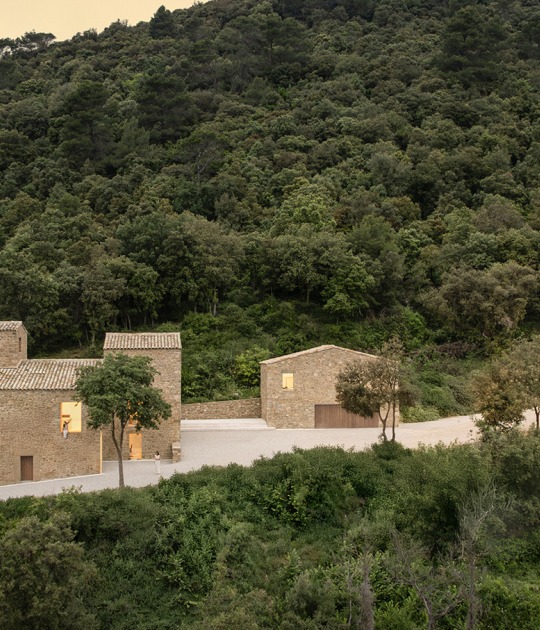The renovation program has two premises or workshops on the ground floor, where a patio is also inserted to facilitate adequate lighting and ventilation, a parking lot and access to the one between the floors and the home on the upper floor.
The project recovers the building by stripping and sanitizing it, inserting a metal skeleton and reinforcing the existing structure. Externally, a new volume made of exposed, rough concrete is added. Internally, the project is finished with the widespread use of thermoclay pieces that, in the words of the architects, generate "a raw and natural landscape that links the intervention with the use of the new ceramic workshop."
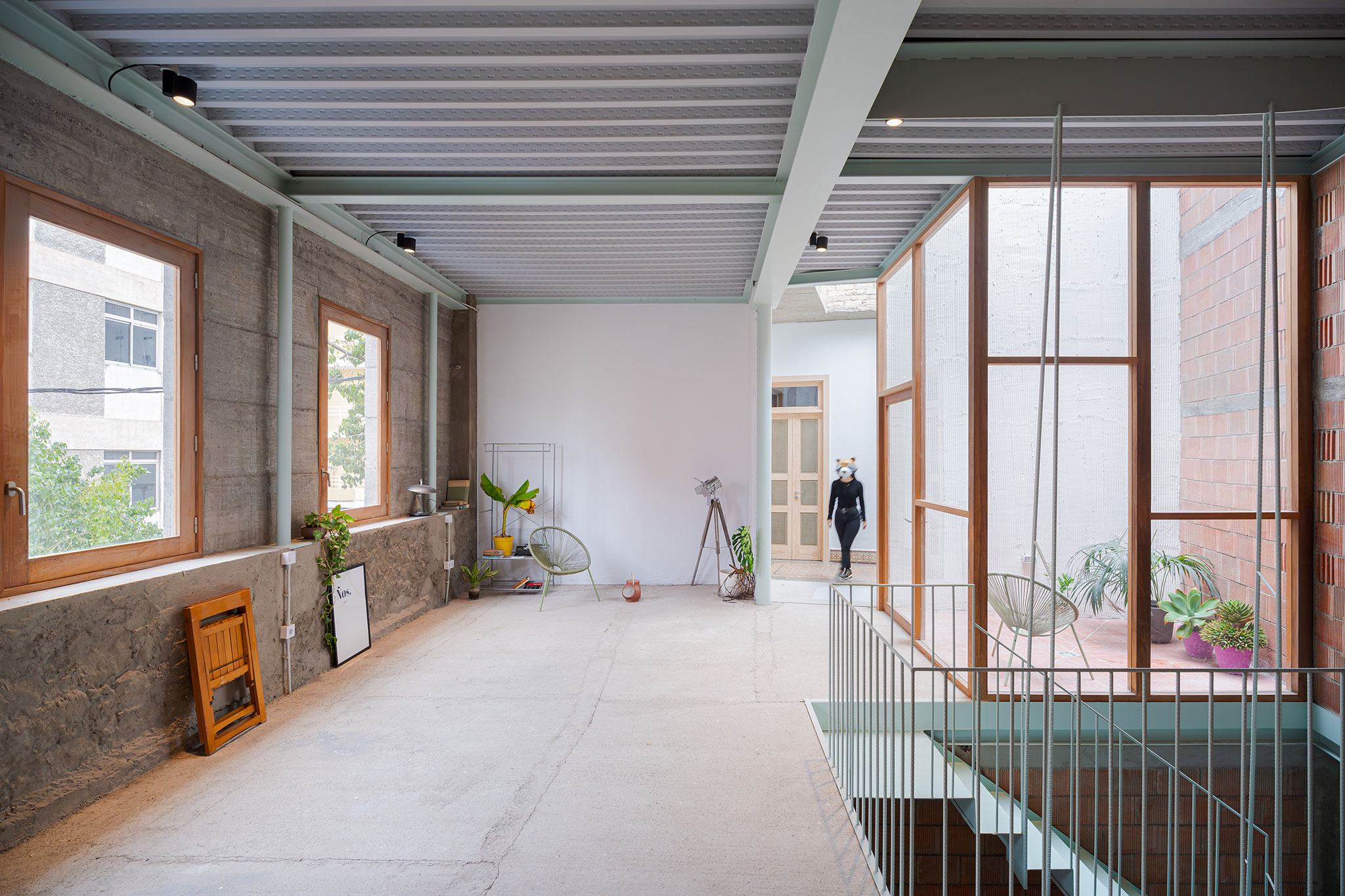
House M by Xstudio. Photograph by David Rodríguez.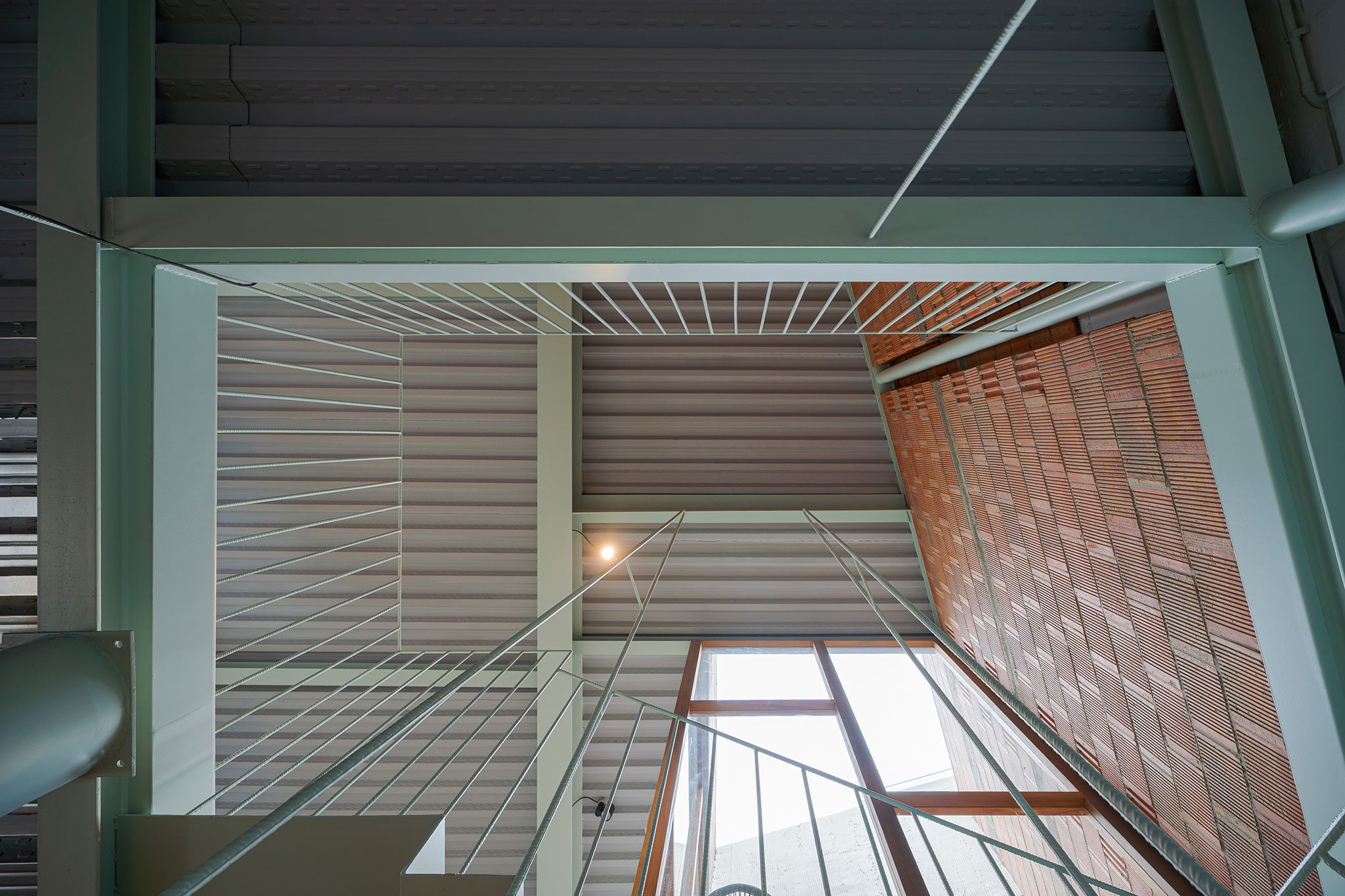
House M by Xstudio. Photograph by David Rodríguez.
Project description by Xstudio
Arenales is a central neighbourhood of Las Palmas de Gran Canaria characterized by the presence of old houses. After decades of degradation, clearly marked by being the epicentre of the city´s illicit, the neighbourhood is undergoing a progressive transformation, driven by the purchase of homes by private developers, which represents an opportunity to reclaim the place's identity.
House M is one of these examples of the preservation of "collective heritage," which is not protected but whose main value lies in preserving the historical memory of the neighbourhood, bearing witness to its historical and cultural context.
An old corner building, in an advanced state of deterioration, is being restored and expanded for living and working purposes. The ground floor, which once housed a bar, now accommodates a ceramic workshop that will contribute to the social revitalization of the neighbourhood. The owner's residence will be on the first floor.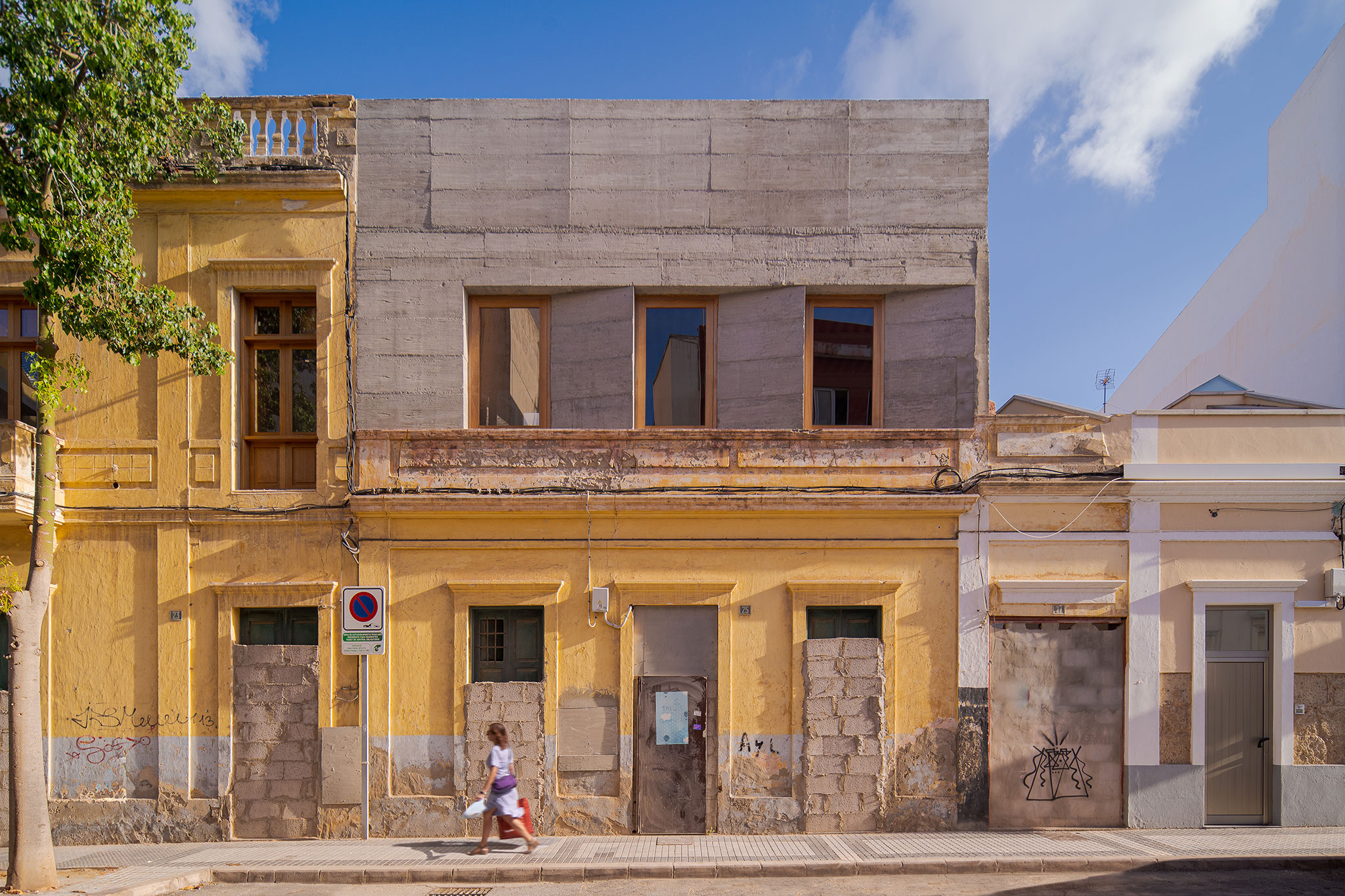
House M by Xstudio. Photograph by David Rodríguez.
The intervention favours an architecture that is approachable, honest, and "handmade," aiming to respond to the conditions of the place with its discourse, while also assuming budget limitations as another element of the context, which also invites a phased intervention. The existing structure is cleaned up and adapted through a minimalist exercise, laying the foundation for a regenerative process that will need to be extended over time. The raw and imperfect appearance of many surfaces is respected, preserving the traces of the period when the house was uninhabited. The workshop is equipped with the necessary facilities for its use, maintaining original floors and signage from the old bar, and incorporating the layout of the new installations as an additional layer.
The building completes its apparent volume by inserting a visible metal skeleton, supported on the load-bearing walls of the existing structure, and a large central portico that is reconstructed by reinforcing the existing pillars. This new body is externally manifested as a rough, imperfect concrete shell, poured in small layers and form worked with carpets, assuming its appearance as a natural consequence of the project's constraints.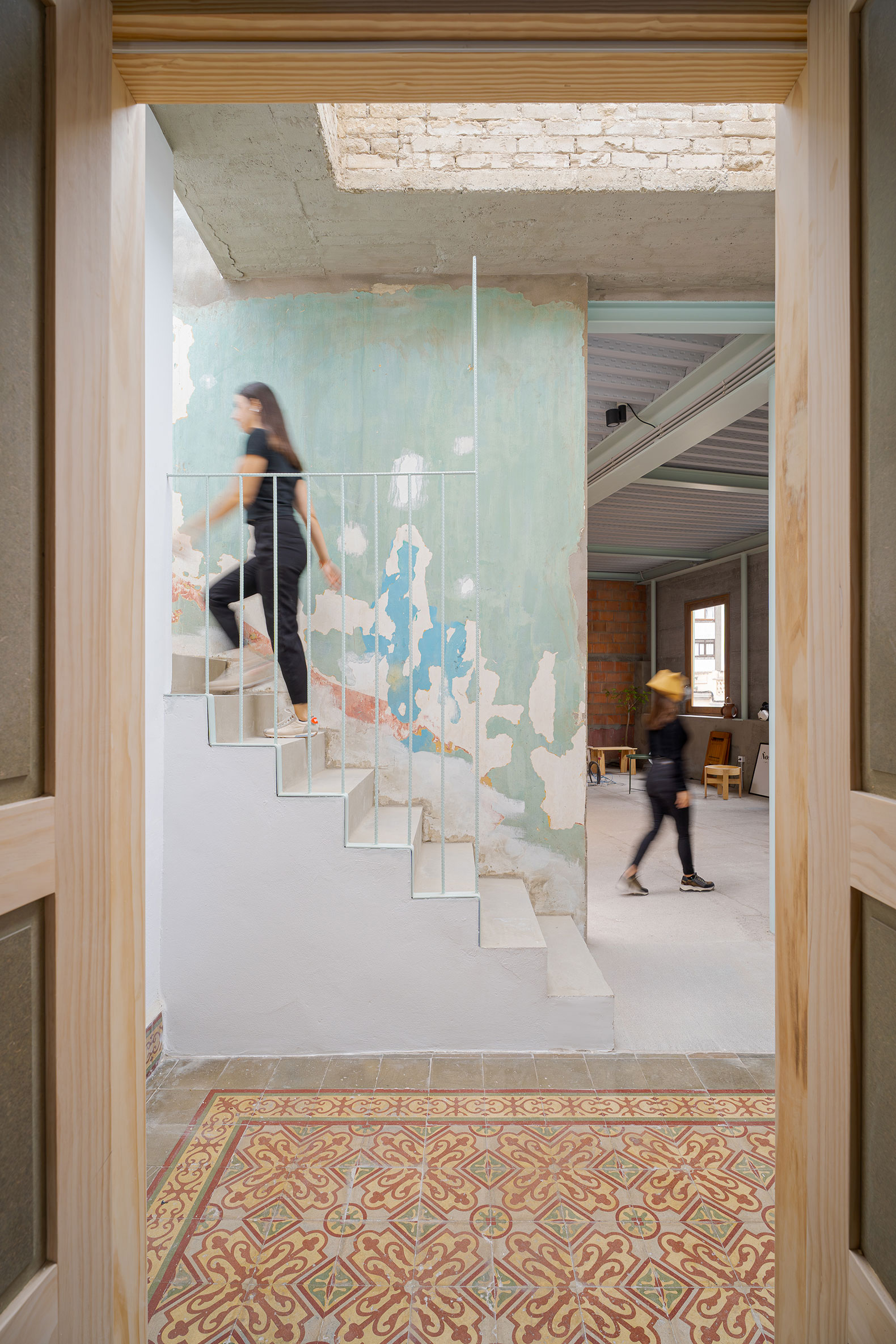
House M by Xstudio. Photograph by David Rodríguez.
Internally, the additions are lightweight to minimize the loads on the original structure. The exposed structure of metal profiles and composite slab floors is complemented by the use of thermoclay in partitions and enclosures, an unusual resource in the Canary Islands but chosen for its ability to create an interior landscape linked to the building's new activity (ceramics) and its considerably lighter weight than the vibrated concrete block commonly used.
These operations shape a high pavilion for the public activities of the house, accessed by a hanging staircase and functioning as a transitional piece between the street and the more private áreas.
The insertion of a courtyard in the southeast corner of the building ensures proper lighting and cross ventilation, completing the formalization of this work with a vocation for epigenesis, just like the neighbourhood in which it resides.
